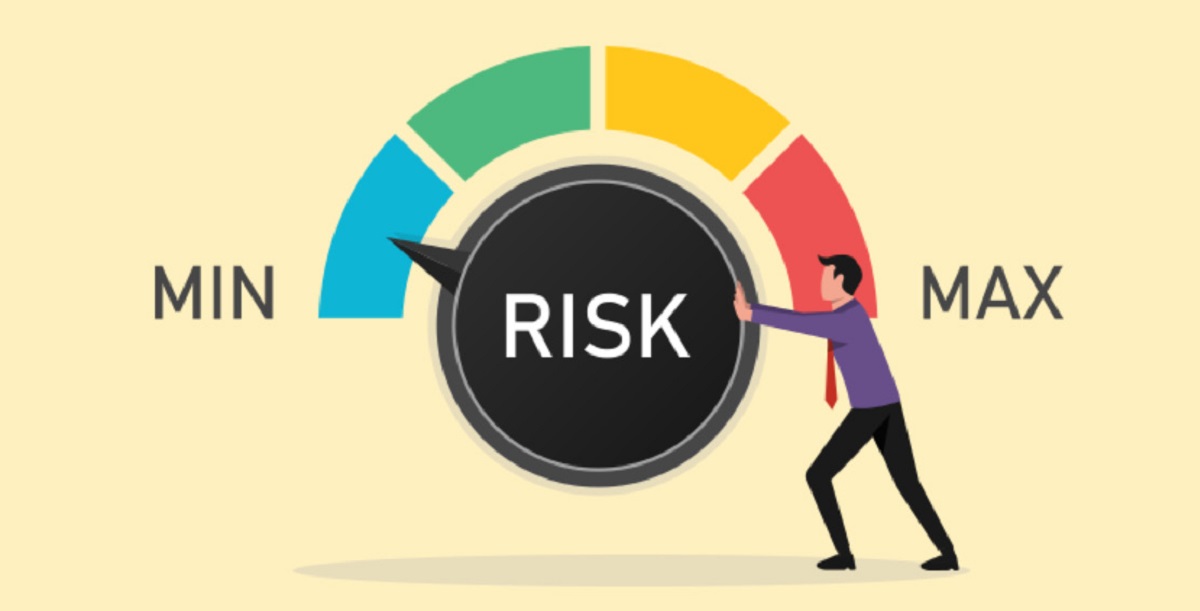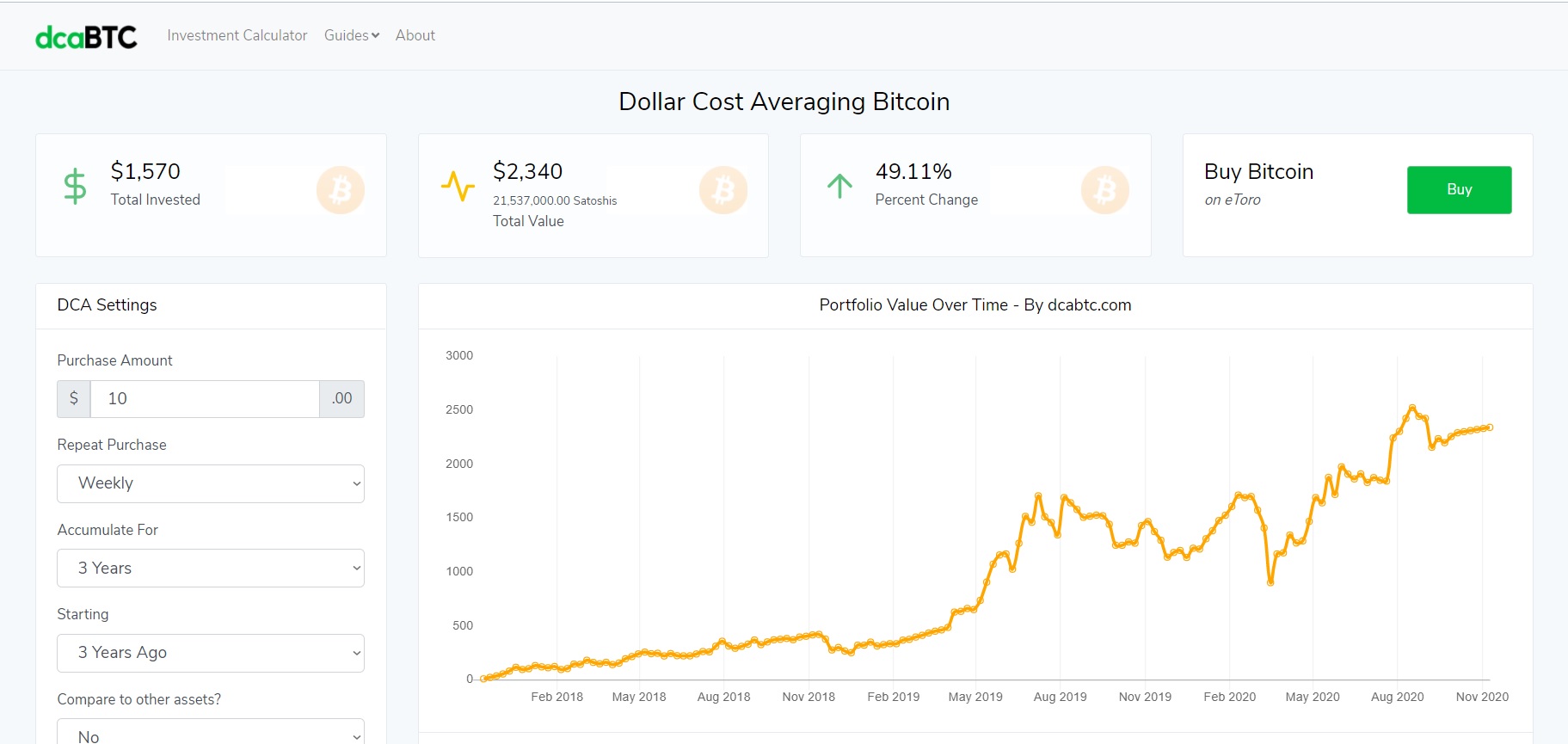Introduction
When it comes to short-term investments, there are various risks that investors need to be aware of and take into consideration. While short-term investments can offer the potential for quick returns, they also come with their fair share of risks. Understanding and avoiding these risks is crucial for protecting your investment and maximizing your returns.
In this article, we will explore some of the key risks associated with short-term investments and discuss strategies to avoid them. By having a clear understanding of these risks, you can make informed investment decisions and minimize the potential downsides.
Before we dive into the specific risks, it’s important to note that every investment carries some level of risk. The key is to identify and assess these risks, and take appropriate steps to manage and mitigate them.
Investing in the stock market, for example, involves market risk, which is the potential for the overall market to decline in value. On the other hand, investing in fixed-income securities such as bonds carries the risk of interest rate changes impacting their value.
Understanding these risks is crucial, as it allows investors to make informed decisions based on their risk tolerance and investment goals. By taking proactive steps to mitigate potential risks, investors can increase their chances of achieving their desired investment outcomes.
In the following sections, we will explore some of the most common risks associated with short-term investments and provide strategies to avoid or mitigate them. By being aware of these risks and implementing risk management strategies, you can enhance the chances of successful short-term investing.
Market Risk
Market risk refers to the potential for the overall market or a specific market sector to experience a decline in value. This risk is inherent in all types of investments and can have a significant impact on short-term investments.
For example, if you are invested in stocks, market risk can arise from factors such as economic downturns, political instability, or unexpected events that cause a market-wide decline in share prices. Similarly, if you have invested in a specific sector, such as technology or healthcare, developments in that sector can impact the overall market and affect the value of your investment.
To avoid or mitigate market risk, diversification is key. By spreading your investments across different asset classes, industries, or geographic regions, you can reduce the impact of market fluctuations on your overall portfolio. This way, even if one investment performs poorly, others may offset those losses.
Another strategy to mitigate market risk is to invest for the long term. Short-term investments are more susceptible to market volatility, as they have a shorter time horizon to recover from any downturns. By focusing on long-term investment strategies, you can ride out market fluctuations and potentially benefit from the overall upward trajectory of the market.
Additionally, staying informed about market trends and developments can help you make more strategic investment decisions. Keeping an eye on economic indicators, industry news, and expert analysis can provide valuable insights that may influence your investment strategy.
It’s important to note that market risk cannot be completely eliminated. Even with diversification and long-term investment strategies, there will always be some degree of market risk. However, by understanding and effectively managing this risk, you can minimize its impact and increase the likelihood of achieving your investment goals.
Interest Rate Risk
Interest rate risk is a significant risk associated with short-term investments, especially those that involve fixed-income securities such as bonds or certificates of deposit (CDs). This risk arises from changes in interest rates and can have a significant impact on the value of these investments.
When interest rates rise, the value of existing bonds or CDs generally decreases. This is because newly issued bonds or CDs start offering higher interest rates, making the existing ones less attractive. On the other hand, when interest rates decline, the value of existing bonds or CDs may increase, as they offer higher yields compared to newly issued ones.
To mitigate interest rate risk, consider the following strategies:
- Diversify maturities: Instead of investing solely in short-term bonds or CDs, diversify your portfolio by including a mix of short-term and long-term options. This way, if interest rates rise, the impact on your entire portfolio may be less severe.
- Consider floating-rate investments: Floating-rate bonds or adjustable-rate CDs have interest payments that adjust periodically based on prevailing interest rates. Investing in these instruments can provide some protection against rising interest rates.
- Stay informed: Keep track of changes in interest rates and economic indicators that may influence them. This can help you make more informed investment decisions and adjust your portfolio accordingly.
- Consider interest rate hedging: Advanced investors may choose to hedge their interest rate risk using derivatives or specialized products that can offset potential losses from changes in interest rates. Consult with a financial advisor to determine if this strategy is suitable for your investment goals and risk tolerance.
It’s important to note that interest rate risk is inherent in fixed-income investments and cannot be entirely eliminated. However, by diversifying your portfolio, considering floating-rate investments, staying informed, and exploring hedging strategies, you can effectively manage and mitigate the impact of interest rate fluctuations on your short-term investments.
Credit Risk
Credit risk refers to the potential for a borrower to default on their debt obligations, resulting in a loss for the lender or investor. This risk is particularly relevant when investing in bonds, loans, or other fixed-income securities, where the income and return of the investment depend on the borrower’s ability to make timely interest and principal payments.
When assessing credit risk, it’s important to consider the creditworthiness of the issuer. This involves evaluating factors such as their credit rating, financial stability, repayment history, and industry conditions. Higher-risk borrowers or issuers with a poor credit rating are more likely to default on their debt, leading to potential losses for investors.
To mitigate credit risk, consider the following strategies:
- Research and due diligence: Before investing in any fixed-income securities, conduct thorough research on the issuer’s creditworthiness. Review their financial statements, credit ratings, and any other relevant information. This will help you make an informed decision based on the issuer’s ability to meet their debt obligations.
- Diversify your investments: Spreading your investments across different issuers and sectors can help reduce the impact of credit risk. By diversifying your portfolio, you avoid putting all your eggs in one basket and minimize the potential losses from a default by one issuer.
- Monitor your investments: Regularly review the creditworthiness of the issuers in your portfolio. Stay updated on changes in their financial condition, credit ratings, and industry trends. This allows you to identify any warning signs of potential credit problems and take appropriate action.
- Consider credit risk ratings: Credit rating agencies assign ratings to issuers and their debt securities, indicating the level of credit risk involved. Take these ratings into account when making investment decisions. However, note that ratings are not foolproof and should be used in conjunction with your own analysis and research.
- Invest in creditworthy institutions: Opt for bonds or fixed-income securities issued by reputable institutions with a strong track record of creditworthiness. Government bonds, for example, are often considered to have lower credit risk compared to corporate bonds.
While it’s not possible to eliminate credit risk entirely, following these strategies can help you mitigate the potential impact of default risk on your short-term investments. By conducting thorough research, diversifying your portfolio, monitoring your investments, considering credit ratings, and investing in reputable institutions, you can effectively manage and reduce credit risk exposure.
Inflation Risk
Inflation risk is a concern for all investors, including those with short-term investments. Inflation refers to the general increase in prices of goods and services over time, eroding the purchasing power of money. This risk can impact both the income and the value of your investments.
When inflation increases, the value of the money you receive from your short-term investments may decline in real terms. For example, if you have invested in a fixed-income security with a fixed interest rate, the purchasing power of the interest income you receive may decrease if inflation rises and outpaces the rate of return.
To mitigate inflation risk, consider the following strategies:
- Invest in inflation-protected securities: Treasury Inflation-Protected Securities (TIPS) are bonds issued by the government that offer a return adjusted for inflation. These securities are designed to help protect investors from the erosion of purchasing power caused by inflation.
- Diversify into assets that can outpace inflation: In addition to short-term investments, consider allocating some of your portfolio into assets that historically have shown the potential to outpace inflation, such as equities, real estate, or commodities. These assets have the potential for capital appreciation that can help hedge against the impact of inflation.
- Adjust your investment mix: Review your portfolio regularly and consider adjusting your investment mix to account for changing inflation expectations. For example, you may choose to increase your allocation to assets that tend to perform well during inflationary periods.
- Consider floating-rate investments: Floating-rate bonds or loans have interest rates that reset periodically based on prevailing market rates. These investments may provide a level of protection against inflation, as the interest payments can adjust upward with rising inflation.
- Stay informed about inflation trends: Keep track of inflation indicators, such as consumer price index (CPI) data and central bank statements. This information can provide insights into inflation expectations and help you make more informed investment decisions.
By implementing these strategies, you can help safeguard your short-term investments against the potentially negative impact of inflation. While it’s not possible to eliminate inflation risk entirely, adjusting your investment mix, diversifying your portfolio, investing in inflation-protected securities, and staying informed can help mitigate the erosion of purchasing power caused by inflation.
Liquidity Risk
Liquidity risk refers to the potential difficulty of buying or selling an investment quickly and at a fair price. This risk is particularly important for short-term investments, as investors may need access to their funds in a timely manner.
Short-term investments that lack liquidity can pose challenges when trying to access funds. For example, if you invest in certain types of bonds or illiquid money market funds, you may encounter difficulty in selling them quickly or may have to accept a lower price to sell them at all.
To mitigate liquidity risk, consider the following strategies:
- Invest in highly liquid assets: Prioritize investments that are known for their high liquidity, such as cash, money market funds, or highly traded stocks. These assets can be easily bought or sold at fair prices, providing you with the flexibility to access your funds when needed.
- Diversify your investments: Spreading your investments across different asset classes and sectors can help mitigate liquidity risk. If one investment becomes illiquid, you have other liquid investments to rely on.
- Stay updated on market conditions: Keep abreast of market trends and liquidity conditions. This can help you identify potential liquidity concerns in specific investments or asset classes and adjust your portfolio accordingly.
- Consider the trade-off between yield and liquidity: Some investments offer higher yields but come with lower liquidity. Before investing, carefully assess your liquidity needs and balance them with your return expectations. Be aware that higher yielding investments may have longer lock-up periods or limited opportunities for selling.
- Have an emergency fund: Maintaining a sufficient emergency fund in highly liquid assets can provide a buffer in case of unexpected expenses or cash flow needs. This helps prevent the need to liquidate investments prematurely.
By being mindful of liquidity risk and implementing these strategies, you can minimize the potential challenges associated with accessing your funds when investing in short-term investments. While it’s important to aim for a balance between return and liquidity, prioritizing highly liquid assets, diversifying your portfolio, staying informed on market conditions, and maintaining an emergency fund can help mitigate liquidity risk effectively.
Currency Risk
Currency risk, also known as exchange rate risk, arises from fluctuations in the value of one currency relative to another. This risk is particularly relevant for investors who hold investments denominated in a foreign currency or have exposure to international markets.
When investing in assets denominated in a foreign currency, changes in the exchange rate can impact the value of your investment. If the value of the foreign currency weakens against your home currency, the value of your investment may decrease when converted back into your home currency.
To mitigate currency risk, consider the following strategies:
- Hedging: If you have a significant exposure to a particular currency, you may consider using currency hedging strategies to reduce the impact of exchange rate fluctuations. Currency hedging involves using financial instruments, such as futures contracts or options, to protect against adverse movements in exchange rates.
- Diversify currency exposure: Spreading your investments across multiple currencies can help reduce the impact of currency risk. By holding a diverse range of currencies, you are less exposed to any single currency’s fluctuations.
- Consider currency-neutral investments: Some investments, such as certain ETFs or mutual funds, may offer currency-neutral alternatives. These investments are designed to mitigate the impact of currency fluctuations by hedging their currency exposures.
- Monitor currency trends: Stay informed about currency market movements and trends. Keep track of economic factors, geopolitical developments, and central bank policies that can influence exchange rates. This can help you make timely investment decisions and adjust your currency exposure if necessary.
- Consult with a currency expert: If you have significant currency exposure or are uncertain about managing currency risk, consider seeking guidance from a currency specialist or financial advisor with expertise in international investments. They can provide insights and strategies tailored to your specific requirements.
It’s important to note that while these strategies can help manage currency risk, they cannot completely eliminate it. Currency movements are influenced by a wide range of factors and can be unpredictable. By diversifying currency exposure, considering hedging strategies, monitoring currency trends, and seeking expert advice, you can minimize the potential impact of currency fluctuations on your investments.
Call Risk
Call risk refers to the potential for a bond or other fixed-income security to be redeemed, or “called,” by the issuer before its maturity date. This risk is of particular concern for investors who hold callable bonds, as it can impact the expected income and return on their investments.
When an issuer calls a bond, they are essentially repaying the principal amount to the investors prior to the scheduled maturity date. This typically occurs when interest rates have fallen, allowing the issuer to refinance the bond at a lower cost. As a result, investors may be forced to reinvest the principal in a lower-yielding security.
To mitigate call risk, consider the following strategies:
- Review call provisions: Before investing in a bond, carefully review its call provisions. Pay attention to the call dates, call price, and any conditions that may trigger an early redemption. This will help you assess the likelihood of the bond being called.
- Focus on non-callable bonds: Consider investing in non-callable bonds, also known as bullet bonds. These bonds do not have call options, providing more certainty regarding the investment’s income stream and maturity date.
- Extend the investment’s duration: Opt for longer-term bonds that are less likely to be called. By extending the duration of your investments, you reduce the likelihood of encountering call risk within your desired investment horizon.
- Seek callable bonds with attractive yields: If you choose to invest in callable bonds, favor those with higher yields to compensate for the potential call risk. Analyze the yield-to-call or yield-to-worst metrics to assess the potential return if the bond is called.
- Diversify your fixed-income holdings: Spreading your investments across a range of fixed-income securities can help reduce the impact of call risk. By investing in different issuers, sectors, and maturities, you minimize the concentration of call risk in your portfolio.
It’s crucial to note that even with these strategies, call risk cannot be entirely eliminated. Issuers have the right to call bonds, and market conditions can shift unexpectedly. However, by reviewing call provisions, focusing on non-callable bonds, extending duration, seeking attractive yields, and diversifying your holdings, you can effectively manage and mitigate the impact of call risk on your investments.
Prepayment Risk
Prepayment risk is a concern for investors who hold certain types of fixed-income securities, such as mortgage-backed securities or callable bonds. It refers to the potential for the borrower or issuer to pay off the debt earlier than expected, resulting in the investor receiving their principal earlier than anticipated.
When borrowers make prepayments, it can disrupt the anticipated cash flow for investors. This is especially relevant in the case of mortgage-backed securities, where homeowners may choose to refinance their mortgages when interest rates are low, resulting in the early repayment of the underlying loans.
To mitigate prepayment risk, consider the following strategies:
- Review prepayment provisions: Before investing in a security, carefully review its prepayment provisions. Pay attention to any penalties or restrictions that may deter or limit prepayments. This will help you assess the likelihood and potential impact of prepayments.
- Diversify your portfolio: Spreading your investments across various asset classes and securities can help mitigate the impact of prepayment risk. By diversifying your holdings, you reduce the concentration of prepayment risk in your portfolio and buffer potential disruptions to cash flow.
- Consider non-amortizing bonds: Non-amortizing bonds, also known as zero-coupon bonds, do not make periodic interest payments and have a single payment at maturity. These bonds can help to minimize the impact of prepayment risk on your fixed-income investments.
- Focus on issuers with limited prepayment risk: Some issuers, such as government-backed entities or highly regulated institutions, may have lower prepayment risk compared to others. Investing in securities issued by these entities may help reduce the potential impact of prepayments.
- Stay informed about market conditions: Monitor economic indicators and market trends that can influence prepayment behavior, such as interest rate movements or shifts in borrower behavior. This information can help you make more informed investment decisions and adjust your portfolio accordingly.
While it’s not possible to entirely eliminate prepayment risk, by reviewing prepayment provisions, diversifying your portfolio, considering non-amortizing bonds, focusing on low-prepayment-risk issuers, and staying informed about market conditions, you can effectively manage and mitigate the impact of prepayment risk on your fixed-income investments.
Reinvestment Risk
Reinvestment risk is a concern for investors who receive periodic cash flows from fixed-income investments, such as bonds or income-generating securities. It refers to the potential for the investor to have difficulty reinvesting the cash flows at the same or higher rates of return.
When interest rates decline, as is often the case during periods of economic downturn or monetary policy adjustments, the reinvestment of cash flows from maturing or callable securities may yield lower returns. This can result in a reduction in the overall income generated by the investment portfolio.
To mitigate reinvestment risk, consider the following strategies:
- Assess the investment’s duration: Evaluate the duration of your current investments to align with your anticipated investment horizon. Longer-duration investments may provide more stable income streams over time, reducing the impact of reinvestment risk.
- Consider bond laddering: Implementing a bond laddering strategy involves investing in bonds with different maturity dates. This approach helps to ensure a continuous stream of cash flows and mitigates the risk of reinvesting a significant amount of cash at a single point in time.
- Examine alternative investments: Explore alternative investment options, such as dividend-paying stocks or real estate investment trusts (REITs), that may provide a reliable income stream even in a low-interest-rate environment.
- Stay informed about interest rate trends: Monitor interest rate movements and trends to make informed investment decisions. Keep track of economic indicators and central bank policies that can influence interest rates. This enables you to anticipate potential changes and their impact on reinvestment opportunities.
- Consider bond substitutes: Evaluate substitutes for traditional fixed-income securities, such as annuities or income-focused mutual funds, which may offer more stable income sources. These investment vehicles can be tailored to provide consistent cash flows, reducing the impact of reinvestment risk.
Although it is challenging to completely eliminate reinvestment risk, by assessing investment duration, bond laddering, considering alternative investments, staying informed about interest rate trends, and exploring bond substitutes, you can effectively manage and mitigate the impact of reinvestment risk on your fixed-income investments.
Conclusion
Short-term investments offer the potential for quick returns and liquidity, but they come with their fair share of risks. Understanding and effectively managing these risks is essential for investors aiming to protect their investment and maximize their returns.
In this article, we discussed some of the key risks associated with short-term investments and provided strategies to mitigate them. Market risk, interest rate risk, credit risk, inflation risk, liquidity risk, currency risk, call risk, prepayment risk, and reinvestment risk are all crucial factors to consider when evaluating short-term investment options.
To navigate market risks, diversification and a long-term investment approach can help mitigate potential losses. Interest rate risk can be managed through diversification and investing in floating-rate or inflation-protected securities. Credit risk can be minimized through thorough research and diversifying investments. Inflation risk can be addressed by investing in assets that historically outpace inflation or utilizing inflation-protected securities. Liquidity risk can be mitigated by investing in highly liquid assets and staying informed about market conditions.
Currency risk can be managed through diversification, hedging strategies, and keeping track of currency trends. Call risk can be mitigated by reviewing call provisions, investing in non-callable bonds, and diversifying investments. Prepayment risk can be addressed by understanding prepayment provisions, diversifying portfolios, and selecting issuers with limited prepayment risk. Reinvestment risk can be managed by assessing investment duration, implementing bond laddering, considering alternative investments, and staying informed about interest rate trends.
While no investment is risk-free, by implementing these strategies and staying informed, investors can effectively manage and mitigate the risks associated with short-term investments. It’s important to conduct thorough research, diversify portfolios, and regularly monitor investments to ensure they align with changing market conditions and risk profiles.
Remember, it’s crucial to consult with a financial advisor or expert to determine the most appropriate strategies based on your individual financial goals, risk tolerance, and investment horizon. By taking proactive steps to manage and mitigate risks, investors can increase their chances of achieving their desired outcomes while navigating the ever-changing landscape of short-term investments.

























